Вы здесь
History of Zaysan area.

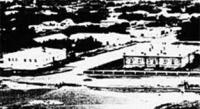
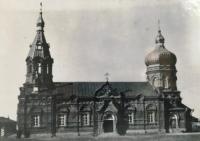
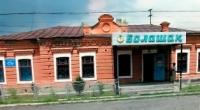
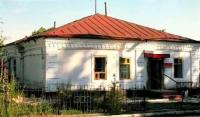
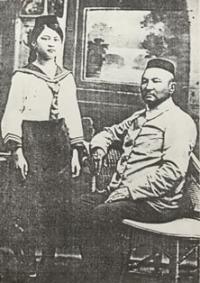

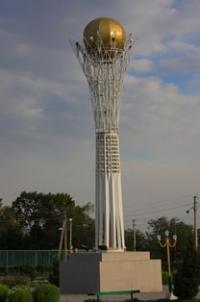
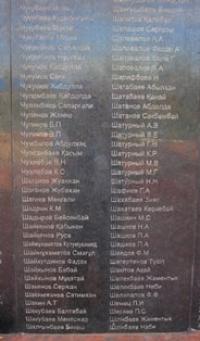
Nature trip in Kazakhstan Altai.
“The journey of a thousand miles begins with a single step”
Lao Tzu.
Day trip to Markakol lake.
In 1864 the military post Zhemeney is founded on the river Zhemeney, in 1865 it is renamed into the village Zhemeney, and in 1868 to the city of Zaysan. By the resolution of VTsIK of January 7, 1928 from area Semipalatinsk, parts of the Ust-Kamenogorsk and Bukhtarma Counties of the Semipalatinsk province, the Semipalatinsk district, including the Zaysan district with the center in the city of Zaysan which is removed from the regional downtown Ust - Kamenogorsk on 477 km is formed.
The area - 10,4 thousand kilometers square.
Settlements - 42.
Including 1 town - Zaysan
Are a part of the administrative region 8 rural, 1 city district.
Population - 38.2 thousand persons
The area holds an advantageous geographical location, bordering on People's Republic of China, Kurchum and Tarbagatai areas. Across the territory of the Zaysan district there passes the international automobile track Omsk - Maykapchagay.
The decree of Presidium of the Supreme Council of the Kazakh SSR of October 25, 1957 to structure of the area transferred the territory of the abolished Tarbagatai district. No. 117 the area is broken up into smaller units by the decision of the East Kazakhstan regional executive committee of March 21, 1959, due to allocation from its structure of the Tarbagatai district.
By the decree of Presidium of the Supreme Council of the Kazakh SSR of January 2, 1963 the Zaysan rural area with the center in the city of Zaysan on the basis of the Zaysan and abolished Tarbagatai areas is formed.
In 1876 making a trip across Western Siberia, the author of the world famous work "Life of Animals" by A. Br, and his colleague - famous German scientific doctor O. Finsh, visited Zaysan and noted in the book "Travel to Western Siberia":
"The Zaysan post quickly develops to degree of the good village, the place makes very pleasant impression the wide streets set with willows and bordered with irrigation canals. His houses put from a brick with flat roofs that gave it a view of the Central Asian settlement.
Almost all houses were whitewashed by lime why looked very cheerful. There is a small beautiful wooden church with a belltower. There is also three-cool school". Gradually trade quickened, through local customs with China there were caravans, in the city District management, the mosque, treasury, customs, post cable office, the market square with benches of merchants Abylkhanov, Erzin, Manapov, Semenov, Bekchentayev opened.
In the Zaysan County agriculture, gardening, beekeeping, tanning production developed, it was open the mylovarny plant, manually made a brick. In 1882 Hakhlov A. S. prepares the first apiary in the Zaysan region, having equipped it with frame beehives of different systems; in the picturesque valley of the foothills Saura the beekeeping economy, Hakhlov A. S was built. the beehive to 160 finished quantity. However for bees the melliferous base died to be enough, Hakhlov gets one more apiary at the river Terekta.
Here violent vegetation smelled sweet: dogrose, lucerne, raspberry, currant. Honey was in great demand, it was taken out to Semipalatinsk and other cities of Kazakhstan. Honey samples from Khokhlov apiary were exhibited at the international exhibition at Chicago (1893) where was highly appreciated.
With opening by the exiled revolutionary E. P. Mikhaelis on the Kendyrlyksky coal-field, coal mining for the population was organized. According to "The Siberian trade industrial year-book" for 1914 - 1915 on all mines of the field in 1912 1632 tons of coal and 265,5 tons of combustible slates were extracted.
In 1909 in Zaysan the poet Pavel Vasilyev was born, he hotly loved the homeland Kazakhstan. He devoted it inspired words including these:
The parent the steppe, accept mine
The painted heart hot blood
Steppe song! Having inclined to a headboard
All your herbs, one you I sing!
I address melodious to a sound,
It silver will not grow dull
So put, about the steppe in the son a hand
Curve hawk feather.
He admired to the family to heart Zaysan:
- In the distance сиренево and blue
At calm Zaysan is beautiful
And in the green wetted-through basket
Fat ides move.
(Fishermen)
Memory of the poet - this not only his verses. This grateful feelings of fellow countrymen to the beautiful earth of Priirtyshje, grew the big and bright poet. In the last quarter of XIX - the beginning of the 20th centuries the city of Zaysan was a starting point for many expeditions exploring Central Asia, Manraksky and Tarbagatai mountains, a travel to China, Mongolia, Tibet through Zaysan.
From here began and here finished the expeditions P. P. Semenov Tian - Shansky, N M Przhevalsky, M. Aldiyarov, S. P. Potanin, E. P. Mikhaelis, P. Kozlov and other scientists and travelers. Returning human memory to the historical past, in the city park the bronze bust in honor of "the traveler of all times and the people" was established to N. M. Przhevalsky subsequently.
In the middle of the 19th century forcing out the primitive wild nature, the population was engaged in intensive agriculture, livestock production, artificially created mowings, the Zaisan County became agricultural and livestock edge.
In development of edge, creation of the first schools outstanding Kazakh educators Ch. Valikhanov, I. Altysarin, S. Toraygyrov made much. History of the Zaysan region very interesting and peculiar. The edges given on stories can be found in books "Complete Geographical Description of Our Fatherland" under P. P. Semenov's edition volume.
18, 1903, S. Chernykh "Under the sky of Altai", "One, but ardent passion". Memory of heroes of the Great Patriotic War, people of Zaysan store in the hearts, about those who defended Independence of Kazakhstan before whom it is declined the heads:
the first pilot of the Kazakh people Zh. Maldybayev, the Hero of the Soviet Union In Golovchenko, the full Gentleman of the Awards "Glories" M. Aubakirov, before the one who forged the Victory in the back of the enemy - Honour and Slava! the senior generation - our fellow countrymen: E. Bekseitov, K. Bokazhanov, B. Kudabayev, Starchenko N, A. Vershinina and many others.
In 1967 Uydene reservoir is under construction that allowed to irrigate 13 thousand hectares of the earth, and two powerful horizontal turbines reliably supply a considerable part of the region with the cheap electric power.
The earth of the Zaysan region discloses to the inquisitive person the riches, coal, oil, gas, mineral sources, curative dirt. Persistence of people, love to the earth made this edge attractive to intensive development of agriculture, production of soy, grain, oil crops, their processing on the place.
By the work Heroes of Socialist Work, O. Bayseitov, T Turarov, Z. Seysekenov, Sh. Mukanov, N Esentayev glorified the Zaysan district. The Zaysan region is the administrative Region of East Kazakhstan region. The primary branch of the region is a development of agriculture, livestock production, crop production, the oil and gas branch develops in recent years, coal mining is conducted in the open way.
In the town of Zaysan was:
The industrial enterprises - 2
Country Farms - 1077
Comprehensive schools - 30
Rural out-patient clinics - 22
Preschool institutions - 3
Music school - 1
School of young creativity - 1
Sports school - 1
Recreation center including rural clubs - 9
Libraries - 8
The museum - 1
Historical and cultural monuments are carefully stored in the city of Zaysan - it is buildings of merchant houses, shops. Zaysan is famous for numerous parks, gardens. Every year our city becomes more more beautiful. Streets equip with modern conveniences and planted trees and shrubs, lighting of streets is carried out, roads are asphalted, construction of new housing estates is conducted.
Authority:
<http://cultura-arhiv.vko.gov.kz/ru/region_17.htm? mode=print>
Photos are copied from town museum of local lore of the city of Zaysan
Alexander Petrov.







